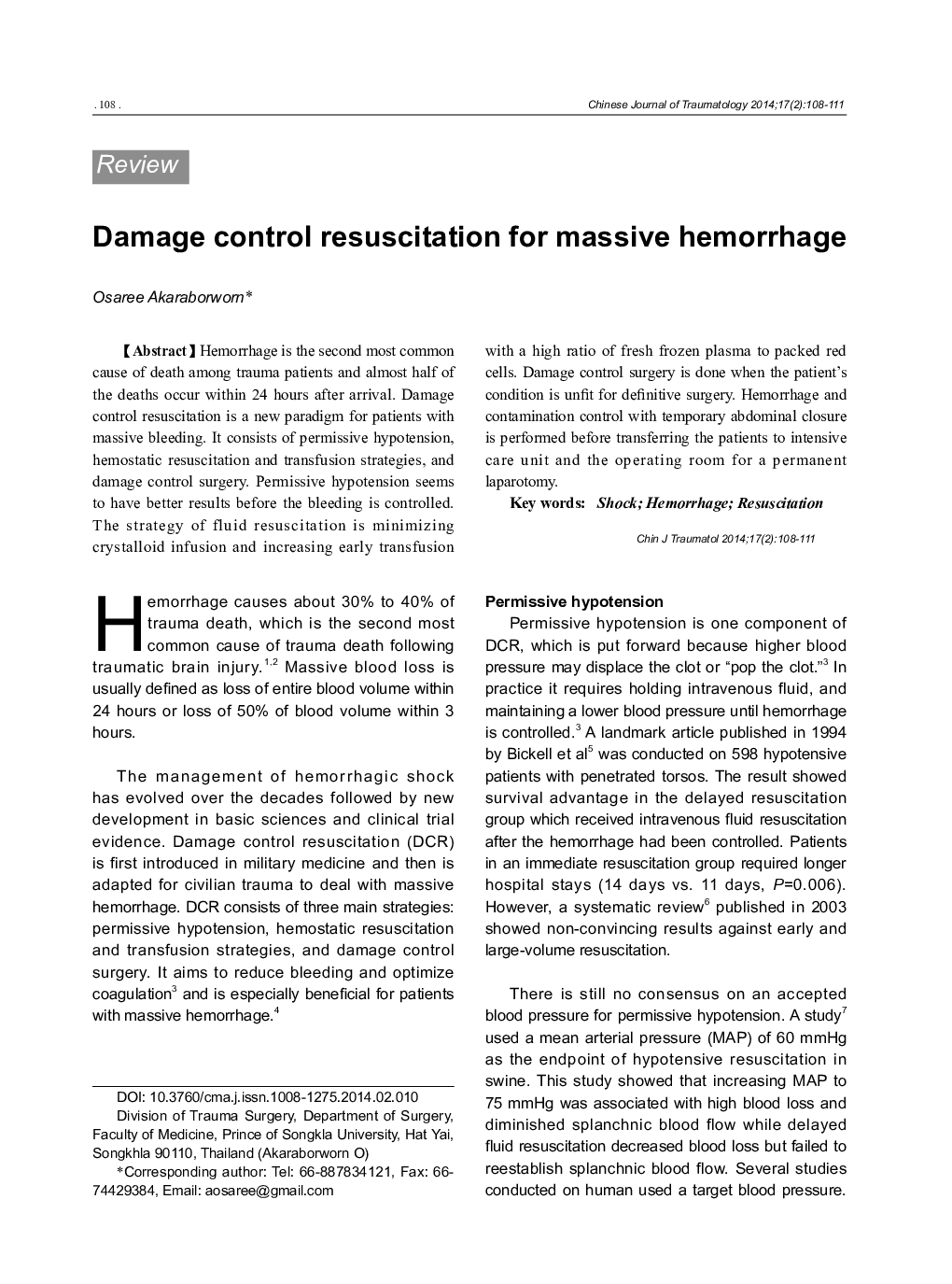| Article ID | Journal | Published Year | Pages | File Type |
|---|---|---|---|---|
| 3107213 | Chinese Journal of Traumatology | 2014 | 4 Pages |
Hemorrhage is the second most common cause of death among trauma patients and almost half of the deaths occur within 24 hours after arrival. Damage control resuscitation is a new paradigm for patients with massive bleeding. It consists of permissive hypotension, hemostatic resuscitation and transfusion strategies, and damage control surgery. Permissive hypotension seems to have better results before the bleeding is controlled. The strategy of fluid resuscitation is minimizing crystalloid infusion and increasing early transfusion with a high ratio of fresh frozen plasma to packed red cells. Damage control surgery is done when the patient’s condition is unfit for definitive surgery. Hemorrhage and contamination control with temporary abdominal closure is performed before transferring the patients to intensive care unit and the operating room for a permanent laparotomy.
